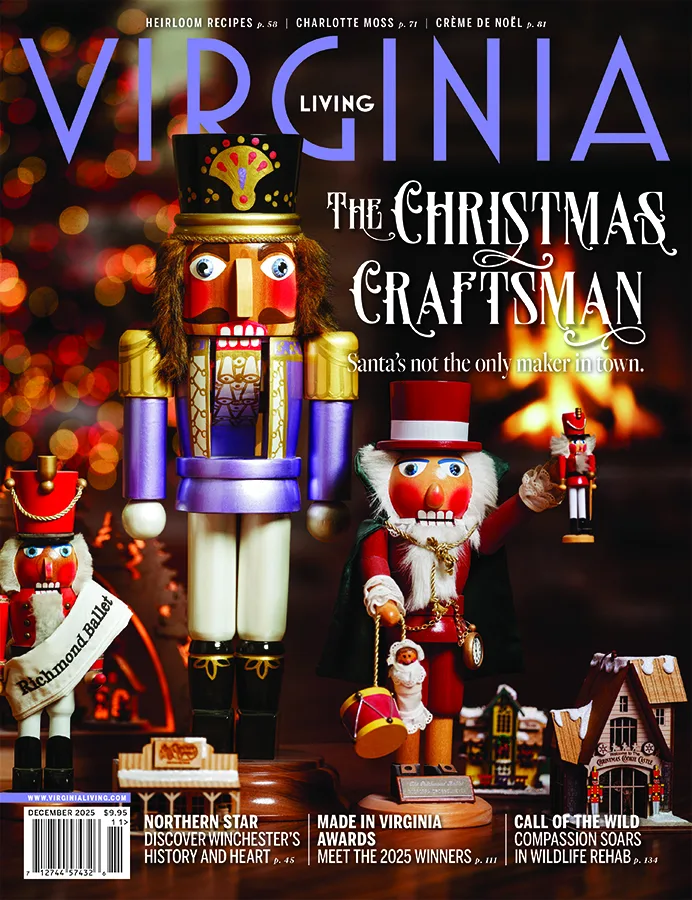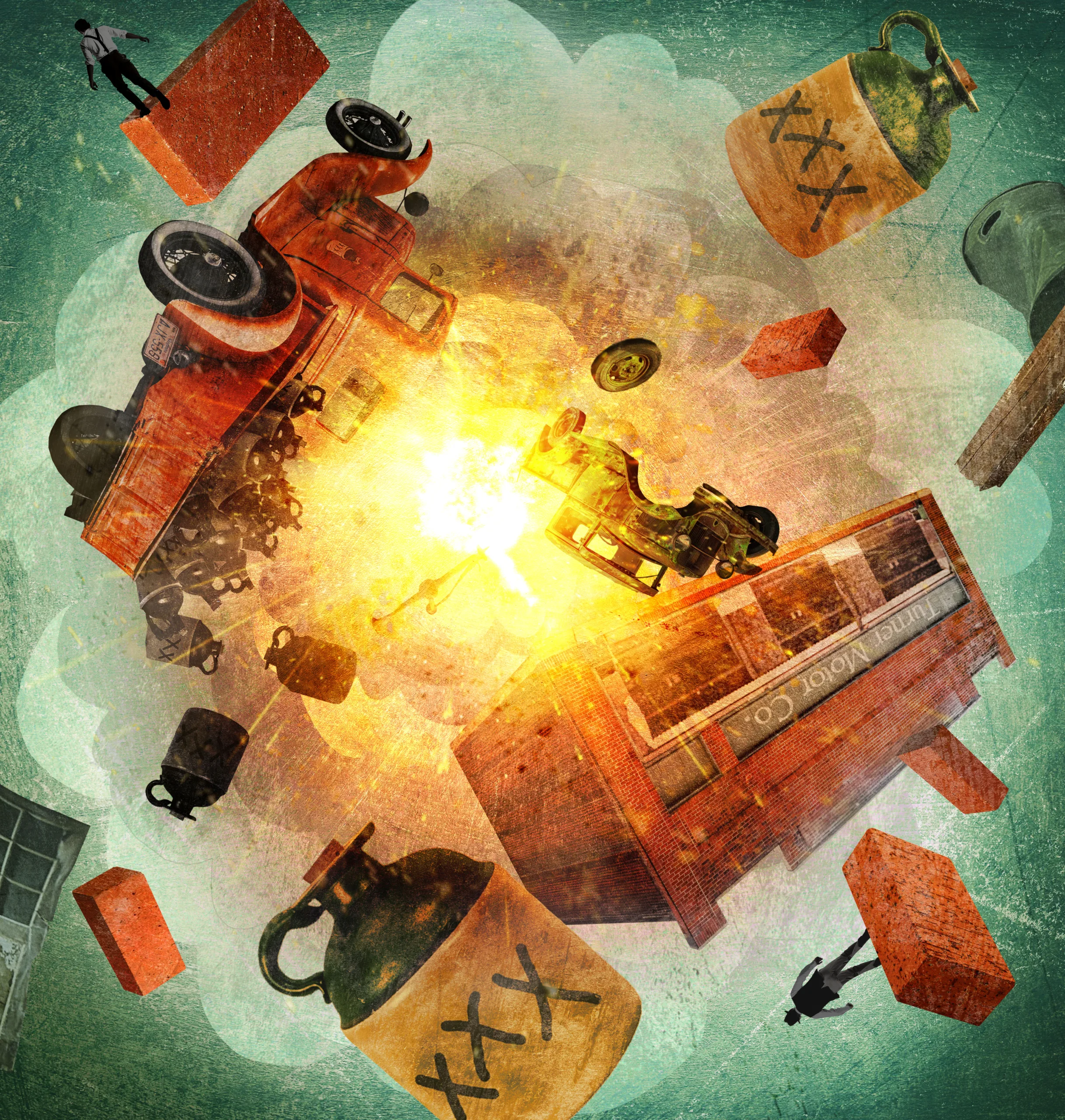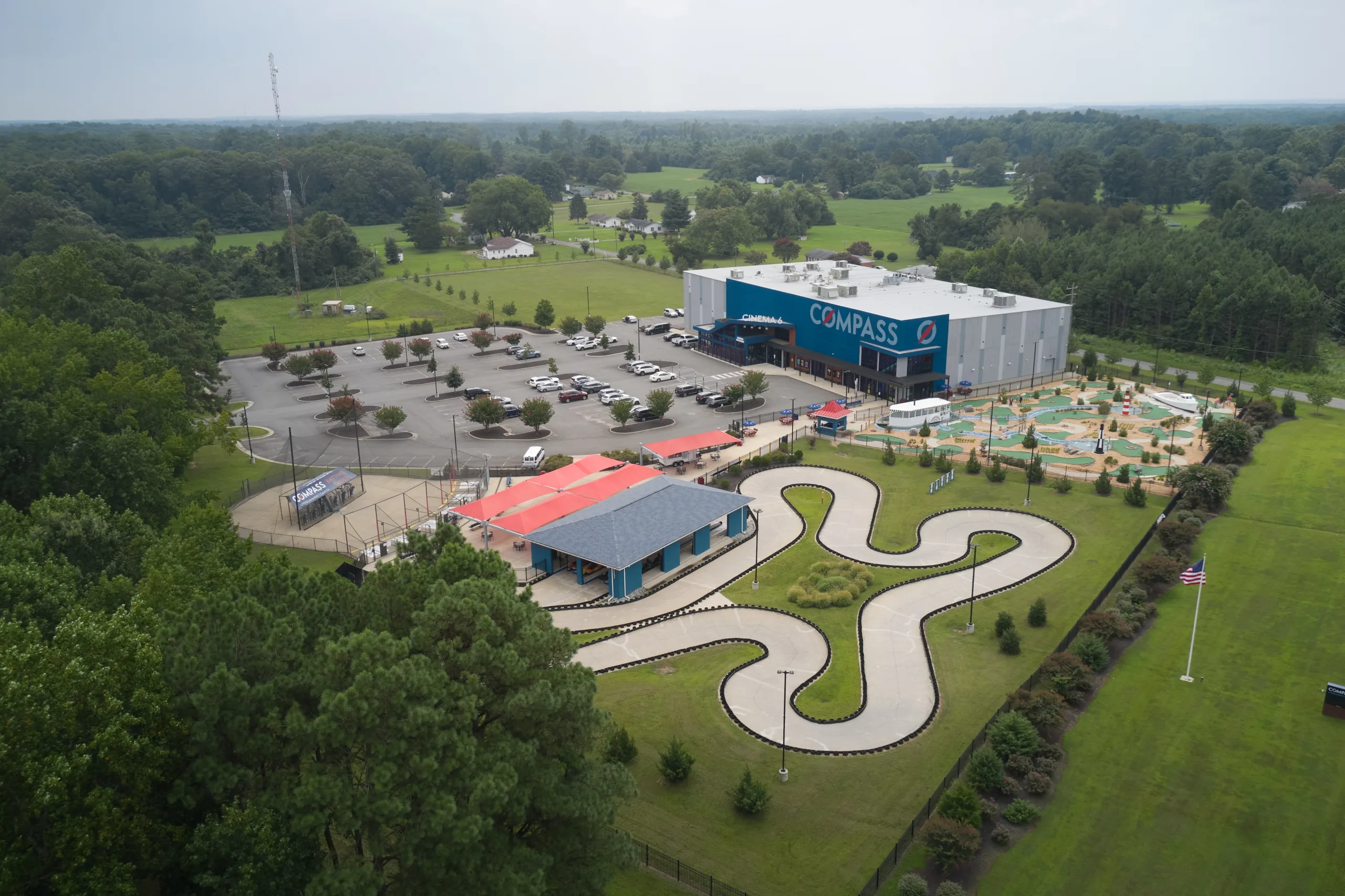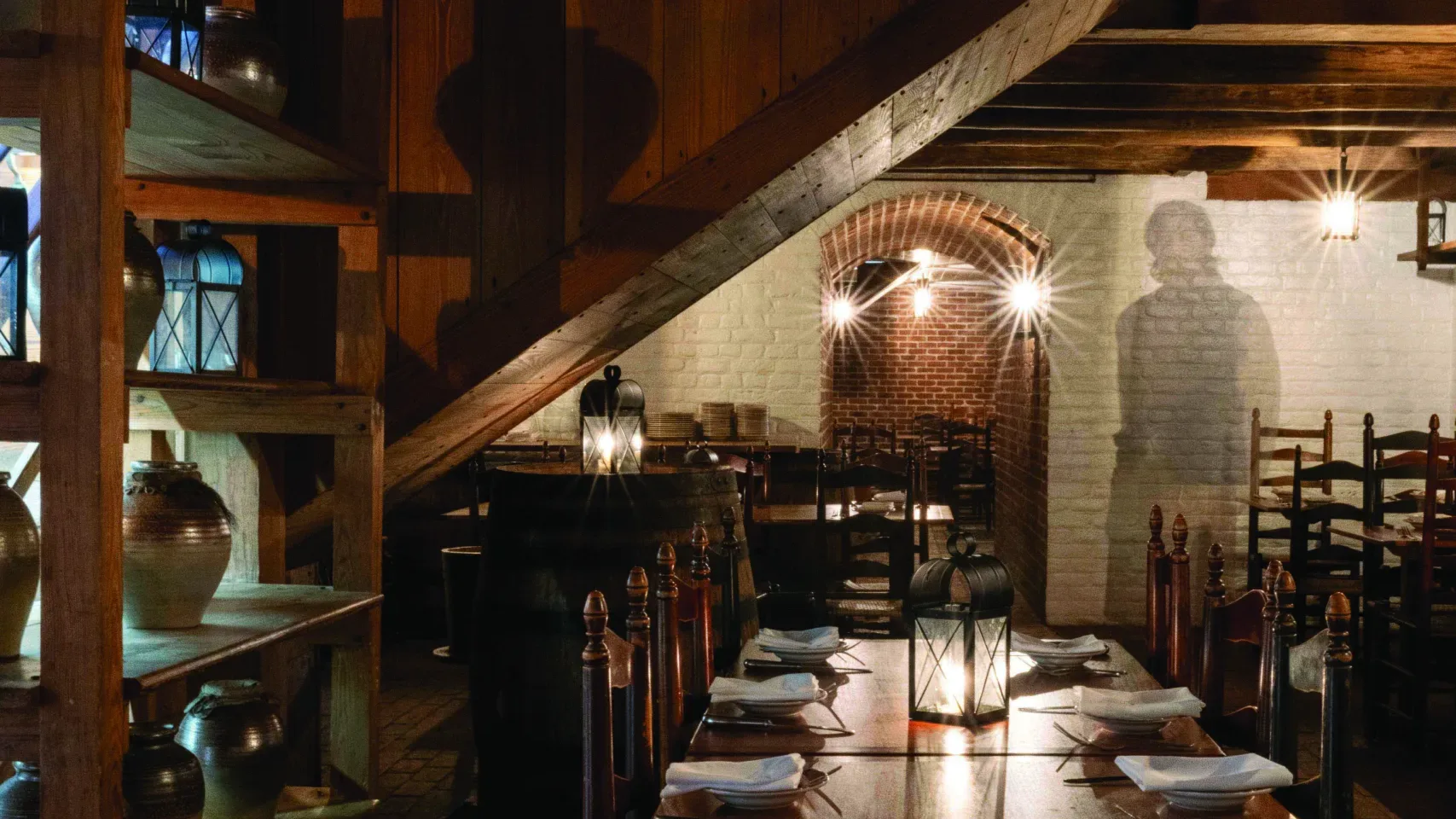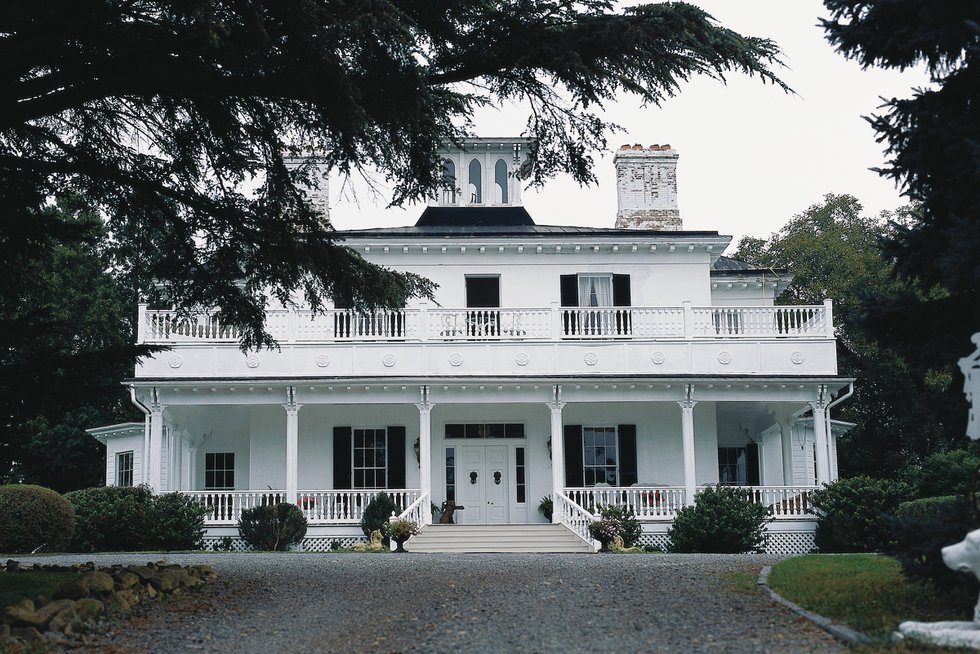Since its restoration, Lynchburg’s Old City Cemetery has become one of the most popular spots in the city—a parklike expanse with some 20,000 graves, five museums and gardens that attract families of the deceased and tourists alike.




A monument to a 2-year-old who died in 1909.





Catalpa flowers; a stone.

A primitive, hand-carved tombstone; right, the entrance arch to the Confederate section, with the Monument to the States (oldest Confederate monument in Virginia) and Speakers’ Belvedere in the background.
Lynchburg’s Old City Cemetery has an entrance that fits its history. You enter by driving between the gate’s stately brick piers, passing among the earliest of the 20,000 graves and between two ranks of old Atlantic white cedars, jostling for a short stretch along original cobblestones and continuing down a beautifully landscaped hill, whose vistas include the cupola of the old courthouse downtown.
The Old City Cemetery began in 1806 when Lynchburg founder John Lynch donated one acre of land for the purpose. A decade later, he added another acre to the site—and it is there, near the entrance, that the city’s founding fathers repose (though Lynch, ironically, is not among them—he is buried in Lynchburg’s Quaker cemetery). The Old City Cemetery is to a large extent a 19th-century place, although burials didn’t cease until 1965. Significantly, both blacks and whites are buried on the property, although mostly in separate sections. In fact, three-quarters of the graves are of African Americans, both slaves and free men. Many of the rest are veterans who represent service in every armed conflict from the American Revolution to the Vietnam War. A Confederate section is the resting place for more than 2,200 men from 14 states.
Over the decades, the cemetery suffered from a lack of maintenance. The grounds had become choked with honeysuckle and littered with junk and damaged gravestones. The overall neglect was not intentional; for a long time, there was only one groundskeeper for the whole 26-acre expanse.
But neglect is not a problem today. Thanks to private donations over the last 25 years and the steadfast efforts of volunteers, many of them from the surrounding neighborhood, the Old City Cemetery has undergone a full-flown restoration. It is now one of the most popular places in Lynchburg—a parklike destination that attracts not just families of the deceased but also locals and tourists with an interest in Lynchburg history. Depending on the season, one can see luxuriant spring flowers, Skyline Drive-worthy fall foliage or stark, wintry trees. Impressive collections of antique roses and daffodils attract crowds from early spring through Memorial Day. Graves of interesting or important people have interpretive signs for those on self-guided tours. And, uniquely, there is a collection of historic museums on the property. “I like to tell people, ‘If we can get you in the front gate, I guarantee you’ll come back,’” says director Bruce Christian. “There’s something in this place that’s going to speak to you.”
The city owns the cemetery, but a foundation, the Southern Memorial Association, is charged with its management, preservation and interpretation. Christian calls it “an interesting and, I think, unique relationship.” He adds, “Everything the SMA does here, we do with private funds. But the minute it’s completed, we hand it to the city, and it becomes city property.” Christian, who holds a bachelor of arts degree from William and Mary and a master’s from Tulane, took over as director two years ago when Jane White, the first director and the catalyst behind the “rehabilitation,” as she calls it, retired. Because the director position is volunteer, Christian wears two hats: He is vice chairman of Lynchburg-based N.B. Handy Co., a leading wholesale distributor of commercial products—but he can be found at the cemetery from 11 a.m. to 3 p.m. weekdays.
The cemetery’s revival can be traced to a 1981 luncheon meeting of a handful of civic-minded women. “There were four friends, sort of longtime Lynchburgers,” says Jane White. “We were invited to lunch with two elderly friends”—the only remaining members of the Ladies Confederate Memorial Association, charged with the upkeep of the Confederate section. Over the years it was this section—which with its small, precisely arrayed stones evokes Arlington Cemetery—that had received the most care, but even it was in fairly rough shape in the early 1980s. By dessert, the torch had passed to the younger women, along with the association’s treasury, a checking account totaling about $300. Within weeks they updated the confederate group’s name to the Southern Memorial Association.
At first the ladies worked only sporadically to improve the grounds, but with the approach of Lynchburg’s bicentennial in 1986, they picked up the pace. “The organizers were encouraging every little civic group in town to do something,” recalls White. Among other projects, the SMA decided to restore a woebegone bed of roses in the Confederate section. Dawn Fields, head of public relations and visitor services for the cemetery, says the roses had originally been planted decades earlier, the goal being to have them blooming red and white on Decoration Day, the precursor of Memorial Day. White, a landscape designer who had rescued other historic gardens in the area, elicited the help of local rose expert Carl Cato. Rather than try to rescue the original roses, they started from scratch, planting a timeline of rose varieties along the wall, beginning with Henry VIII’s favorite, Rosa mundi, and proceeding in the order of the dates of their horticultural debut.
By then the restoration effort was gathering momentum—but the “point from which we mark time,” says White, came seven years later, in 1993. That’s when a cataclysmic storm hit Lynchburg. It tore up the cemetery grounds, toppling the belvedere that was a focal point of the Confederate cemetery (originally installed for veterans’ ceremonies) and generally leaving the place a huge mess. There were so many downed trees that a car couldn’t drive through the property.
With the rest of Lynchburg in equally bad shape, no city workers could be spared for the cleanup. Two men who lived near the cemetery, Frank Coles and Jimmy Preston, offered to help White with the labor. “We worked every day and pulled stuff out,” says White, who around that time became director of the cemetery. “We had a little bit of money—from the Garden Club, from Keep Lynchburg Beautiful—to pay these guys. Every now and then the city would send a truck.” White worked out of her car and conscripted one of the tabletop-style grave markers into use as a desk. There was no bathroom, no phone.
In 1996, with half of the funding from the city and the other half raised by the SMA, the original portion of the Cemetery Center was built, incorporating materials from an old Lynchburg house that had been razed. “We had two rooms and a couple of bathrooms,” White remembers. “That was a big deal.” She happily vacated her mobile office, and a volunteer answered the new telephone. Now enlarged, the Cemetery Center houses exhibits, administrative offices and meeting space.
White credits Gloria Franklin, who served on the SMA board for five years, with playing a key role in the revival of the Old City Cemetery. When Franklin was a child, her family lived very close to the cemetery, on Taylor Street, and she and her friends used the place as a playground. The site’s appeal never diminished for Franklin, even after she became an adult. By then she’d grown to appreciate the Old City Cemetery as a haven for birds and plant life.
When she and White became friends, Franklin showed White her childhood photographs of the cemetery, and they helped White in creating period landscape designs. And Franklin got the neighborhood involved in the ongoing restoration—by helping people make connections with relatives buried in the cemetery. She also helped to crystallize the cemetery’s importance to Lynchburg’s African American history. “This was the only cemetery for black folks for a long time,” says Franklin, who worked at Lynchburg General Hospital until her 1987 retirement. Neighbors lent her their old family photos, copies of which are now on display in an album in the Cemetery Center, but she didn’t anticipate the photos’ popularity. “I thought, ‘Why do you want these pictures? Nobody wants to look at this.’ Well, wasn’t I surprised!”
Today, the Old City Cemetery has five small museums, each focusing on an aspect of the cemetery’s past. The Cemetery Center, in addition to administrative offices, houses the Mourning Museum, featuring 19th-century mourning clothing, objects and customs. The Pest House recreates the House of Pestilence, originally located adjacent to the cemetery, where people with smallpox and other diseases were quarantined in the 1800s. The Station House Museum is an old railroad depot, seemingly stopped in time in 1918, its furnishings as they might have been at the end of World War I. “The number one non-medically-related cause of death at the turn of the 20th century was train accidents,” says Fields, explaining the connection. Lynchburg was the terminus of three major rail lines, she adds, and “a lot of these Confederate soldiers were brought here by train.”
The Hearse House and Caretaker’s Museum contains a circa 1900 hearse used by W.D. Diuguid, the nation’s second-oldest undertaking concern, which “buried 90 percent of Lynchburg until about 1920,” says Ted Delaney, the cemetery’s curator and archivist. Delaney, on staff for almost nine years, began as a volunteer while in high school. He studied anthropology at the University of Virginia under James Deetz, whose expertise was cemeteries and gravestones. “He treated them as artifacts and material culture,” says Delaney, “and I was very interested in what he had done.” Delaney’s early work at the cemetery included cataloging the tombstones.
The newest museum is the Chapel and Columbarium, built in the style of two old chapels of Central Virginia. It honors religious leaders buried in the cemetery. The proclamation establishing the cemetery allowed for a place of public worship on the grounds. “That wasn’t built until 2006,” Christian says, “and it was the project the SMA undertook for the cemetery’s bicentennial.” The nondenominational chapel, which includes a columbarium with 288 double niches for cremated remains and 12 crypts for burials, represents one of three ways one may now rest finally in the cemetery. The other two ways are in the Scatter Garden, where ashes may be broadcast (there’s also a scatter garden for pets), and the potter’s field. The Chapel is often the site of happy occasions too—namely, weddings. “But no Goth,” Fields says with a smile.
Until recently, official burial records at the cemetery were scarce. But about four years ago, says Delaney, the Diuguid funeral home turned over to the cemetery a trove of old burial books that had been kept in the company’s vault. “They gave them to us on permanent loan,” says the curator. The books are filled with beautiful old script, inked on heavy rag paper. “They go back to 1820, and it’s a complete archive of their business after that.” Records are especially detailed for the Civil War dead, possibly because they came from 14 states. Lynchburg was the second-largest medical outpost in the South during the war. “What’s great is, the records show exactly where the soldiers are [buried],” Delaney says, with coordinates that can be correlated with the cemetery’s master map. The records also make note of the hospitals in which soldiers died—and the dimensions of coffins.
This fall the Diuguid records will be made available to the public with the unveiling of a searchable Web page at GraveGarden.org/diuguid. “For genealogists, this is a gold mine,” says Delaney. “A lot of times, this is the only record we have that someone died, because Virginia didn’t keep death certificates between 1896 and 1912.”
Given all the history of the Old City Cemetery, it’s not surprising that Jane White decided after her retirement to write a book about the place. As she says, “Visitors come to Old City Cemetery to learn the stories, not to see fine monuments.” Coming out in September, the book is titled Once Upon a Time … A Cemetery Story (Blackwell Press, Lynchburg). It will have 20 chapters, each “a short story of how the cemetery came to be,” White says—along with lots of photography.
Turning the cemetery into a focal point for Lynchburg past and present has been “a long journey,” acknowledges Christian—but well worth the effort. The cemetery is now a major cultural and historic asset, with no shortage of mystique.
